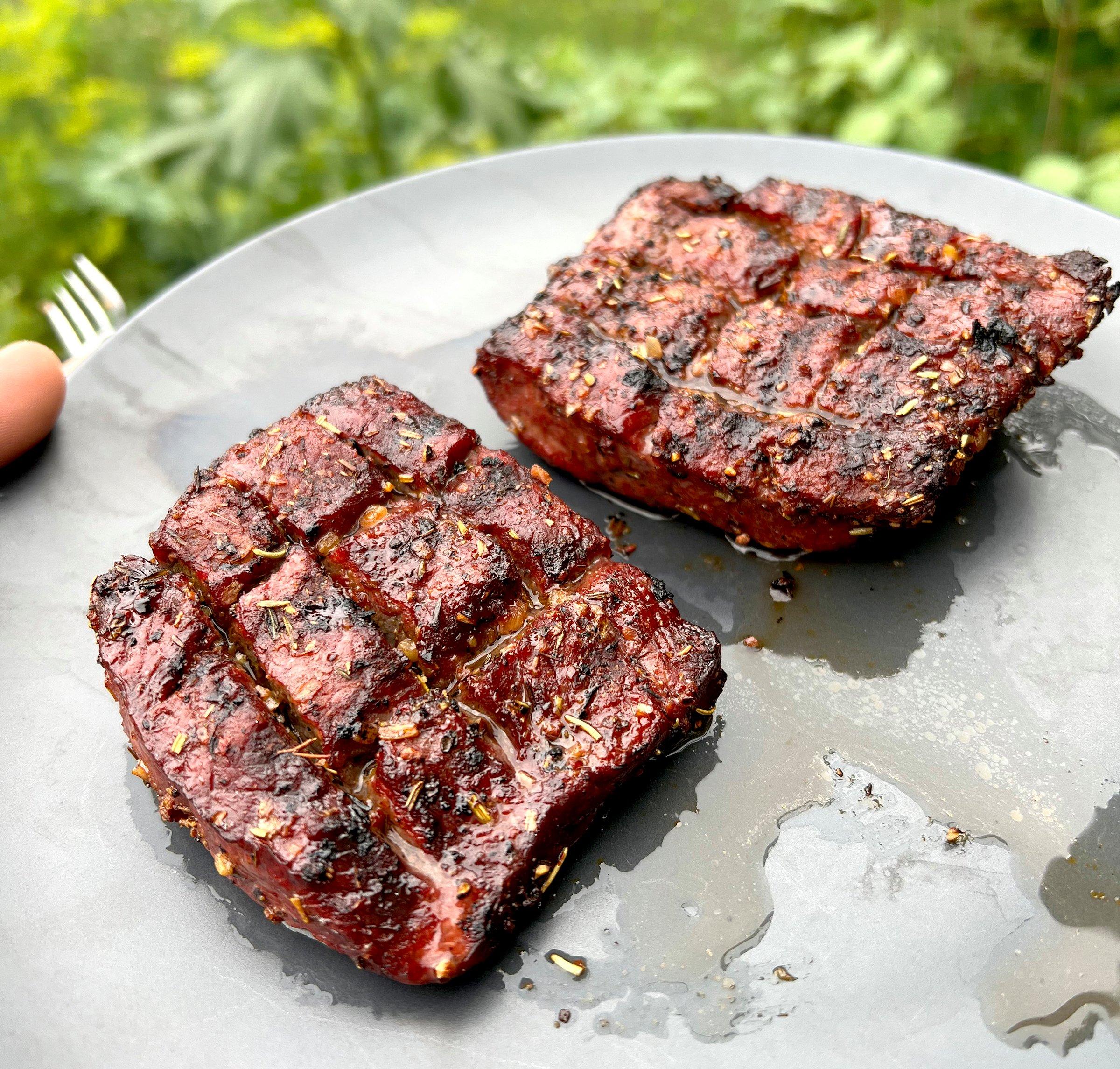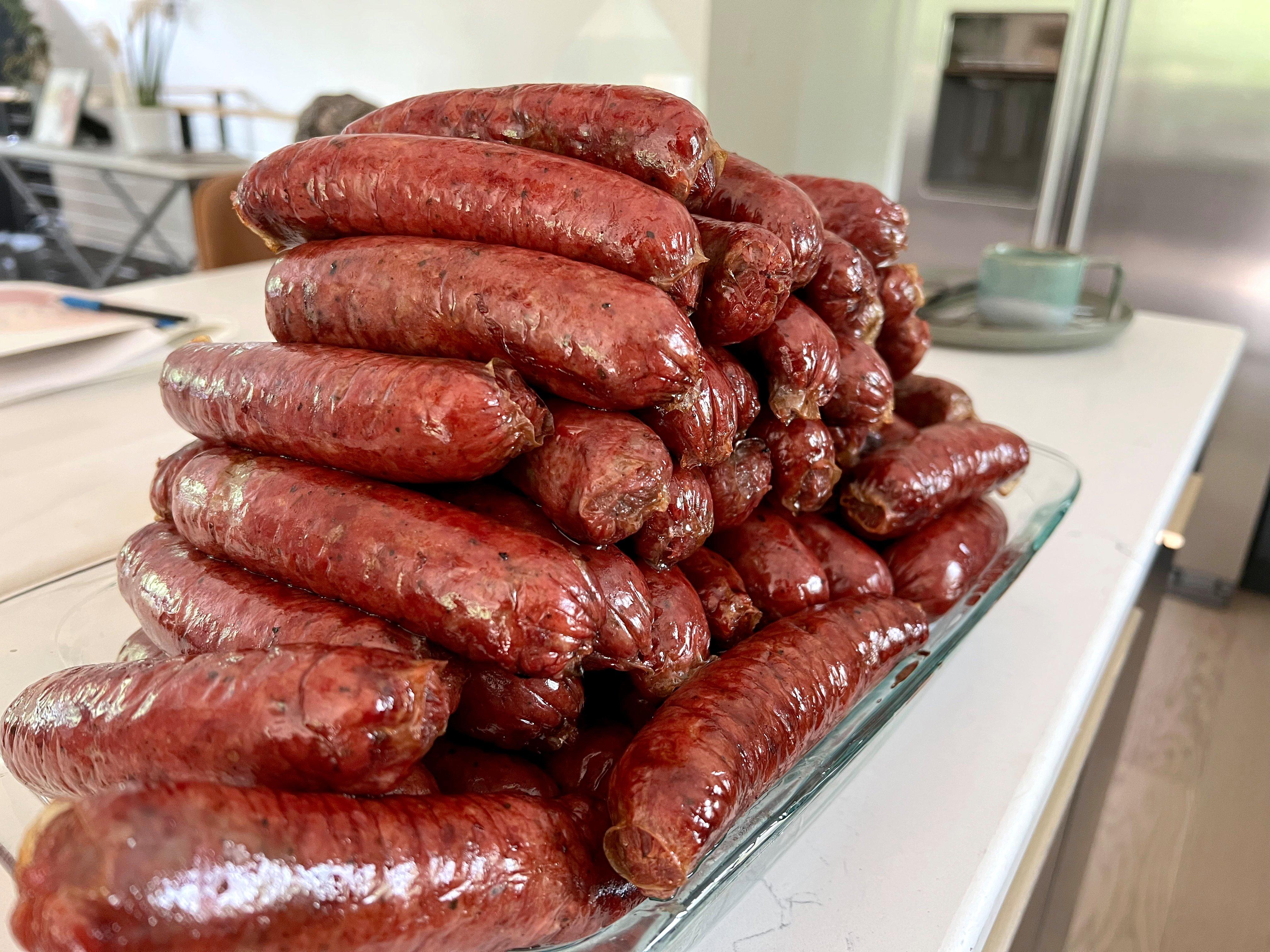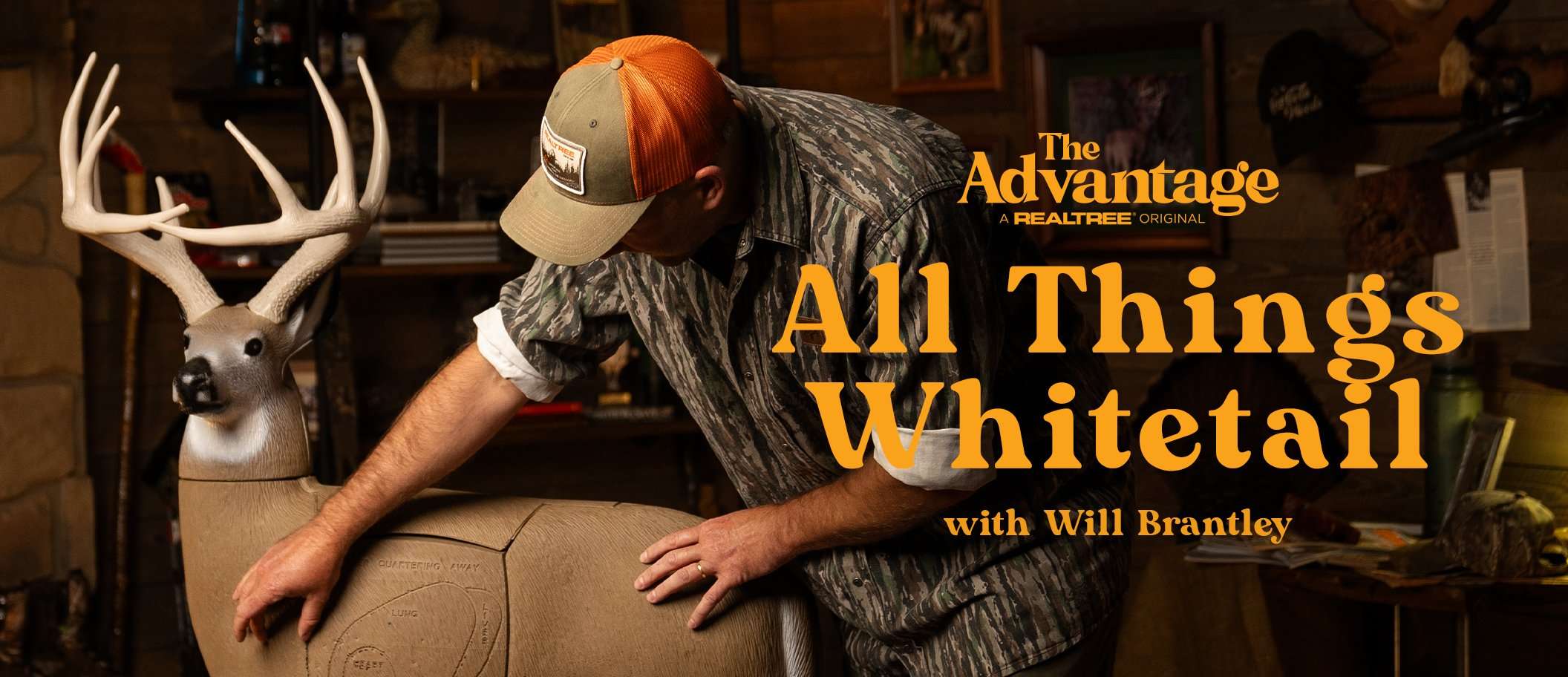Tired of the same old venison dishes? Try these make-at-home delights
If you rely on venison as your annual red-meat supply, harvesting a deer means more than just fond memories and antlers on the wall. It also means nourishment and eliminates the need to shop at the local market’s meat department. As great as venison is, though, you can tire of it when it’s prepared the same way. If you’re looking for something different, consider these dishes.
PERSIAN KABOB

This is the McDougals’ take on Persian kabobs, with sides of basmati rice, pitas, and a fresh tomato and cucumber salad. Photo by Darron McDougal.
My wife and I tried Persian food for the first time at an authentic restaurant in Louisville, Kentucky, in 2016. We had Persian kabobs, with chicken and beef. Afterward, we said, “We can make that at home.” And we did our own take on it.
Season 1-inch venison steak cubes with yellow curry powder and steak seasoning, and then add enough Greek yogurt to coat the meat. Cover and refrigerate overnight. Chop green peppers and mushrooms into 1-inch chunks. Slide the steak cubes, peppers, and mushrooms onto kabob sticks in alternating order.
DON’T MISS: Slow Cooker Italian Elk Sliders
Prepare basmati rice, and when it’s cooked, add butter and lemon zest. Make a diced tomato and cucumber salad with fresh parsley, lemon juice and salt to taste. Prepare pitas (you can find recipes on the Internet) as another side.
Set the kabobs on a smoker or pellet grill at low heat for 20 minutes. This is to add a smoky flavor. Then remove them and get the grill to 450 degrees. Add the kabobs back onto the grill, and finish them to your preferred doneness, tracking the steak’s internal temperature with a meat probe. If you don’t have a smoker or pellet grill, a regular grill will do, or you can broil the kabobs.
Plate your preferred portion with kabobs and sides, and garnish the rice and salad with fresh parsley.
SMOKED AND GRILLED STEAK GRENADE

If you think backstrap steaks are great, you ought to try this technique. Photo by Darron McDougal.
Steak is one of those meals that can be awesome or just OK, especially with venison. After years of research and development — OK, preparing and eating — I’ve landed on a bulletproof steak recipe.
Start with a 5- to 6-inch loin section. Cut it in half lengthways. Slice across the steak sections every inch to half the depth of the meat. Then, rotate the steaks and make crosscut slices, also to half the depth. When complete, the steak should resemble a grenade (see the accompanying image). This technique lets the seasoning reach the meat’s center. The steaks also cook more evenly, I’ve found.
DON’T MISS: Buffalo Wild Turkey Cheese Dip
Add a tablespoon of olive oil to a container. Toss the steak in the oil, and then season it with your favorite steak seasoning. I love a good Montreal steak seasoning. Cover and refrigerate overnight. I’ve found that seasoning the meat in advance provides way more and better flavor than seasoning immediately before grilling.
Next, add the steak to a pellet grill or smoker on a low-temp smoke setting. If your smoker is manual, shoot for 150 to 180 degrees. Let it smoke for 15 to 20 minutes, and then remove the steaks and cover them. Get the grill or smoker up to 500 degrees, and cook the meat to your preferred doneness, tracking its internal temperature with a meat probe. Plate and add a flake of butter to the steak. Enjoy when the butter is melted.
HOMEMADE BRATS

A grinder, sausage stuffer, and a good seasoning-mix recipe are the basics to making brats at home with ingredients you can pronounce. Photo by Darron McDougal.
If you’re a label reader and avoid bad ingredients, you probably have already marked commercially produced brats as off limits. Brat labels often include nitrates, high fructose corn syrup, and even MSG. If you love a good brat but avoid bad ingredients, why not make your own brats?
Plenty of fresh brat recipes online require you to make the seasoning rather than use a commercial seasoning mix (again, watch out for bad ingredients). This allows you to control what goes into the brats, and you can go with anything from a bacon and bleu cheese to an original brat.
CHECK OUT OUR LATEST CAMO PATTERN: Realtree APX
I use a 40-60 or 50-50 pork-to-venison ratio to keep the brat from drying out when cooked. Grind up the meat, create a seasoning mix, and combine the ground meat and seasonings. Next, stuff the meat into collagen or natural casings using a sausage stuffer. You can freeze the brats raw or pre-cook them by boiling or smoking them and then freezing. I prefer to smoke them and get them to 165 degrees internally, and then cool them to room temperature before vacuum-sealing and freezing them.
When you’re itching for a good brat, throw some on the grill or under the broiler, and enjoy with your favorite fixings.

















































